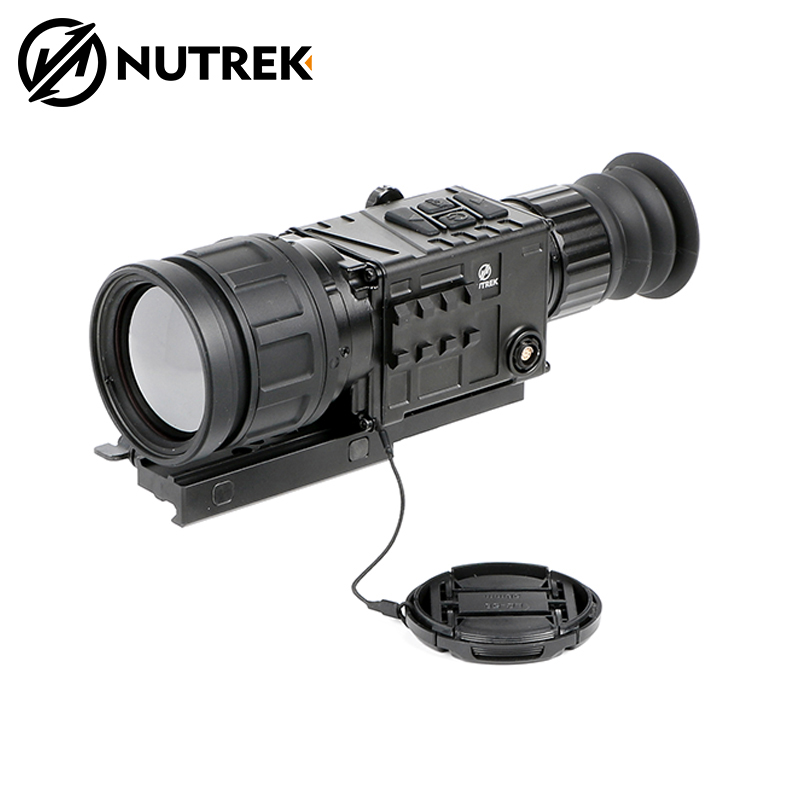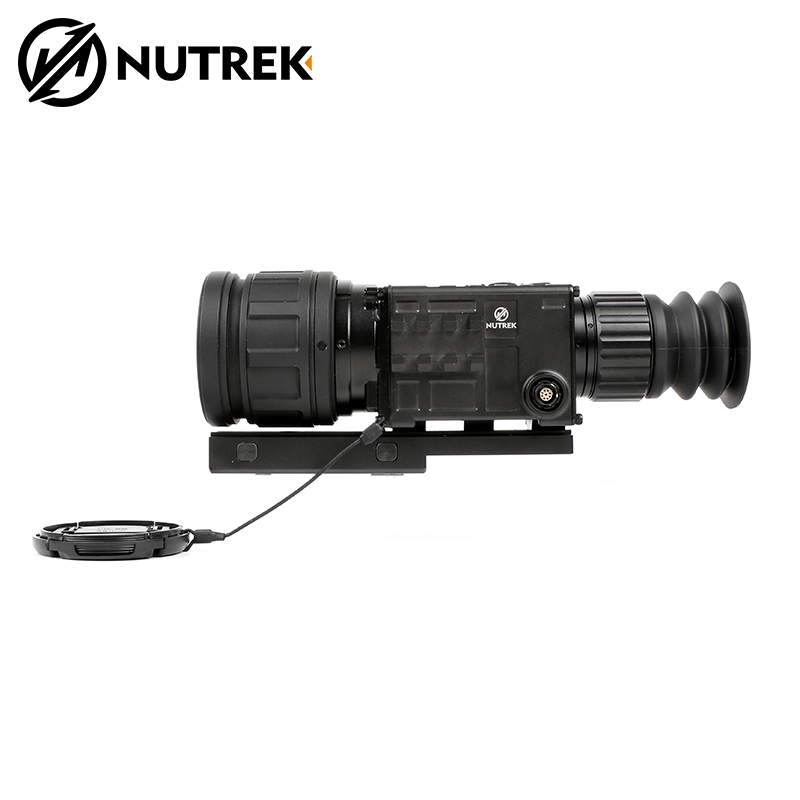One of the most important optical instruments for night hunting is the thermal scope. A thermal rifle sight enables versatility in all seasons and weather situations, whether the weather is foggy or dusty, day or night.
Choosing a
thermal scope is never easy, especially for a newcomer making his first pick for hunting or military activities.
More and more manufacturers are entering the market, ranging from expensive military models to less expensive commercially available scopes. Military-grade thermal scopes are built for harsh battle situations, as opposed to more affordable ones, which are always less expensive. Before you choose the best thermal scope, read on for the most comprehensive guide to finding the right thermal scope.
Features that matter
Thermal detector
One of the most important criteria to consider when selecting a thermal scope is the thermal detector. The quality varies, and the performance of the thermal detector is critical to generating a high-quality thermal image.
Resolution
The first factor to consider when assessing actual quality is thermal detector resolution. The targets' display isn't "pixelated" because of the greater resolution's clearer images. Simply because the additional resolution is used to improve the picture quality, a scope with a 640*480 resolution thermal detector will have superior overall image quality than the 384*288 resolution model.
While maintaining the same lens size, a better-resolution thermal detector often has a smaller FOV and magnification. For instance, the magnification level is 7x and 4x for two 12-micron thermal scopes, each with a 75mm lens and resolutions of 384*288 and 640*480, respectively. As you can see, the resolution modification has made a significant improvement in the mag level alone.
However, the price could be very high. Depending on the size of the lens, a 640*480 resolution device typically costs $1000-$2000 higher than a 384*288 resolution one.
NETD
NETD represents the thermal detector's capacity to detect even minor differences in target temperature.
You will get more sensitivity the smaller the NETD is. The quality of thermal detectors must be taken into account because many of them have the same resolution but differ in NETD.
The thermal scope's lens aperture affects the NETD. The amount of light that the lens captures is represented by ‘F‘. In thermal imaging, it is referred to as an F-number, which ranges from 0.8 to 1.6 for most thermal scopes. The NETD is typically provided for an individual detector for F/1.0. The F-number has a significant impact on the NETD for either modules or cameras. It has the following implications for the thermal detector NETD: Total NETD = Detector NETD x F².
Refresh rate
The number of times per second that an image frame is refreshed is known as the refresh rate. It is measured in frames per second or Hertz (Hz) (fps). With a greater refresh rate, your targets move dynamically and without "dragging."
A high-quality thermal scope should have at least 50 hertz to ensure the clearest image of moving targets. The previous generation thermal, with 9hz or 30hz refresh rates, is no longer competitive because the majority of market manufacturers now provide a 50hz refresh rate.
Target details
Target details refer to what you anticipate observing on the primary target that is in your field of vision. Its overall performance on "target details" can be determined by how much information or color temperature you can achieve. Great target details are difficult to obtain since they call for a higher-quality thermal detector and a sophisticated algorithm. Before determining how accurate the "target specifics" are, you should consider the following:
• Can you only see humans or animals in the highlights, like a shiny, overexposed object, when you detect them?
• Can you easily figure out their mouth, nose, and eyes?
• Can you clearly see the fur of the animal?
• Are the animals' bodies shown in a variety of shades, or are they simply seen as a lump or block of identically colored white or black objects?
You can see as many details as you want if your "target details" are good.
FOV and magnification
For a thermal scope, the magnification level and FOV cannot be considered individually. Because it gives them a larger field of view, some users prefer low magnification. Some people require a high-magnification scope in order to shoot far away.
The criteria that determine the magnification level primarily include the focal length of the objective lens and eyepiece, detector pixel pitch, and display screen size. Manufacturers can easily reach a high base magnification level thanks to technology, so why are their thermal scopes typically at a lesser level?
The primary reason is that a higher base magnification may result in a reduction in picture resolution, meaning the highest level of thermal image quality cannot be maintained. Then, it's extremely typical to find a costly thermal scope with a 50mm lens and 640*480 resolution, which offers excellent image clarity but only allows you to shoot at distances of up to 150 meters at a time. Hunting requires more than this.
We are not, however, claiming that higher- or lower-base magnification is always beneficial. The most crucial thing is to choose your ideal scope with the appropriate magnification for your particular shooting style rather than believing certain manufacturers who advise you to use a low magnification.
Durability & Protection
The device's recoil rate is the key factor in durability. The majority of models on the market claim to be 9000J rated, which includes the majority of hunting rifles. A military standard thermal is necessary to withstand increased recoil energy for calibers.50 and beyond.
A higher standard rating is required for military and law enforcement applications, typically one that is similar to or equivalent to MIL-STD-810.
Reticle
A thermal scope must contain the appropriate reticles from a variety of choices. To cover the majority of applications, a manufacturer typically supplies at least six different types of reticles. Although reticle discussion might be extensive, this post will focus on the key features of thermal sight.
The first concern is straightforward: Is the scope equipped with the reticle of your choice?
Is there a real mil-dot or MOA reticle on it?
Is the FFP-style mil-dot or MOA reticle scalable?
Does it offer a simple zeroing?
"hold the zero" or not
Battery
High-quality batteries that last at least 7 hours after a single charge are also included with an excellent thermal scope. A genuine military-grade device needs at least 10 hours of battery life to operate through the night. When coping with tough weather circumstances, you don't want to be disturbed by a battery charger or power bank.
If you require an additional battery pack, some manufacturers only sell their own brand of batteries.
Our top pick:
The NUTREK TIKO series Thermal Imaging Scopes are built per MIL-STD-810F to provide assuring reliability for use under harsh environments. Available with two models of 50mm or 75mm large-aperture objective that collect maximum thermal radiation to increase detection sensitivity, the NUTREK TIKO Thermal Scopes utilizes a 17μm 384x288 pixel detector with a sharp AMOLED display for full contrast and clarity.

Built compact and robust with a tool-free Picatinny mount for easy attachment to weapon for swift tactical deployment. Field-tested with 12GA ammo load, fit for both hunting and tactical mission.

* Built per MIL-SPEC for use in harsh hunting/shooting conditions
* Large aperture objective for maximum thermal radiation collection
* Utilizes sensitive ULIS Asi 17μm 384x288 pixel detector
* Convenient ZERO adjustment with multiple reticle options
* Tool-free Picatinny mount for easy weapon attachment


 0086-763-3368759
0086-763-3368759 info@enjosports.com
info@enjosports.com Help
Help